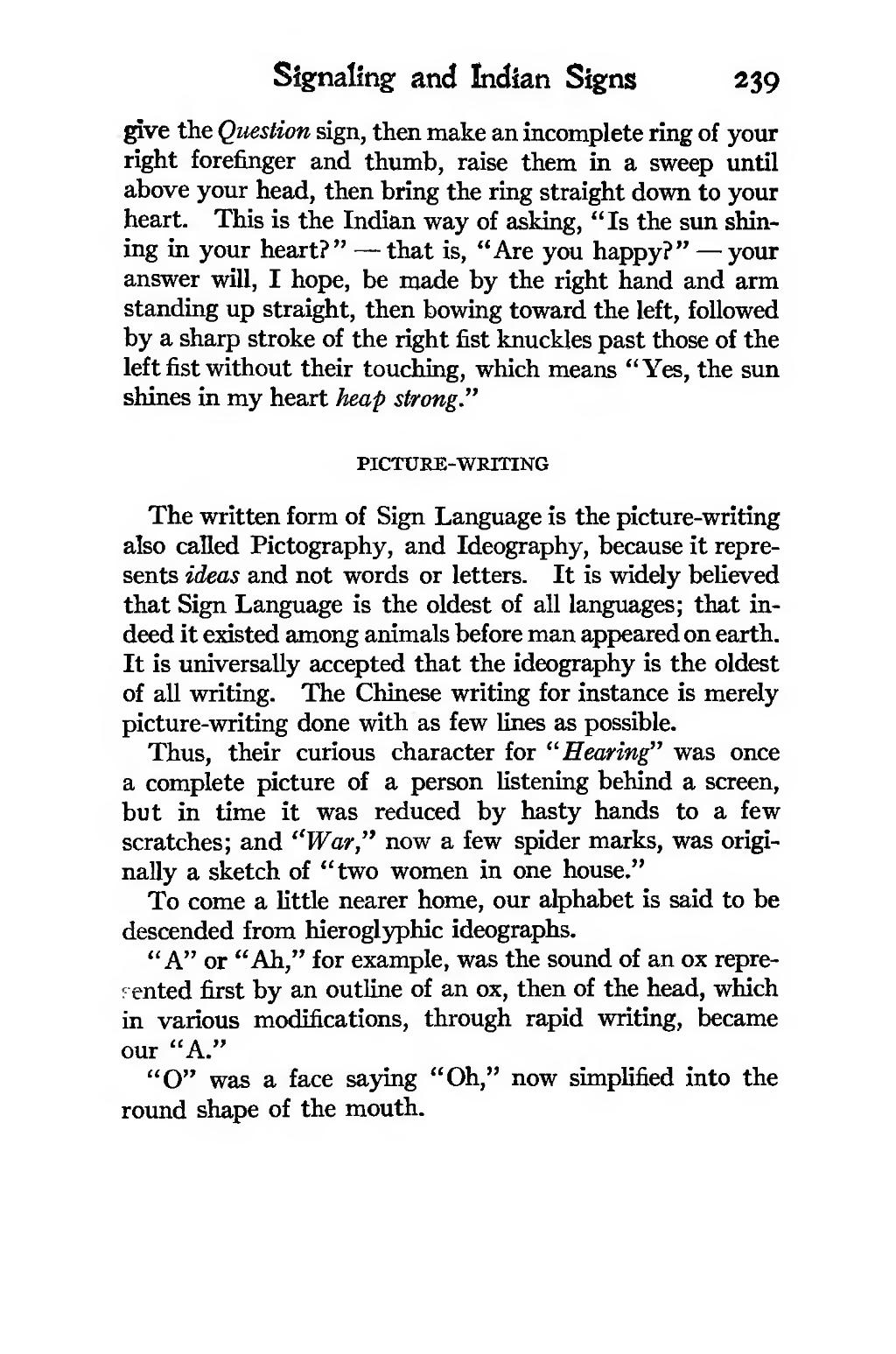Signaling and Indian Signs 239 ^ve the Question sign, then make an incomplete ring of your right forefinger and thumb, raise them in a sweep until above your head, then bring the ring straight down to your heart. This is the Indian way of asking, "Is the sun shin- ing in your heart?" — that is, "Are you happy?" — your answer will, I hope, be made by the right hand and arm standing up straight, then bowing toward the left, followed by a sharp stroke of the right fist knuckles past those of the left fist without their touching, which means "Yes, the sun shines in my heart heap strong." PICTURE-WRITING The written form of Sign Language is the picture-writing also called Pictography, and Ideography, because it repre- sents ideas and not words or letters. It is widely believed that Sign Language is the oldest of all languages; that in- deed it existed among animals before man appeared on earth. It is universally accepted that the ideography is the oldest of all writing. The Chinese writing for instance is merely picture-writing done with as few lines as possible. Thus, their curious character for "Hearing" was once a complete picture of a person Ustening behind a screen, but in time it was reduced by hasty hands to a few scratches; and "War," now a few spider marks, was origi- nally a sketch of "two women in one house." To come a little nearer home, our alphabet is said to be descended from hieroglyphic ideographs. "A" or "Ah," for example, was the soimd of an ox repre- sented first by an outline of an ox, then of the head, which in various modifications, through rapid writing, became our "A." "O" was a face saying "Oh," now simplified into the round shape of the mouth.
Stránka:book 1913.djvu/261
Z thewoodcraft.org
Tato stránka nebyla zkontrolována
